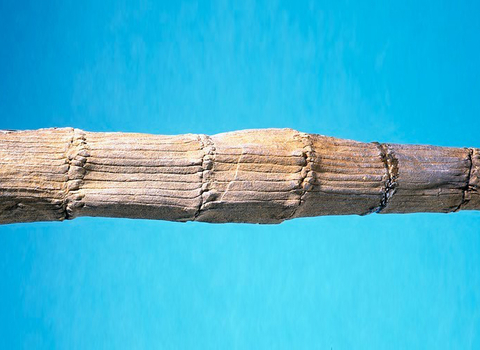What was it?
Calamites was once a tree-like plant that grew 20-30 metres high. Except for its size it looks identical to and is related to the much smaller horsetail fern that today grows in hedgerows and as a difficult to get rid of weed in our gardens.
How old is it?
The fossils of Calamites we find in Northumberland are from the Carboniferous period, so around 325 million years old.
Where did it live?
The swampy forests that were ultimately to become peat and then coal. They had roots (rhizomes) that could give them a firm hold in the unstable sandy soils of river deltas.
Where are the fossils found?
Pieces of the ribbed stems of Calamites are found in many Carboniferous rocks (they can look like ribbed bamboo). Good places to look are rocky foreshores along the coast.
Are these animals still alive today?
The tree-like Calamites is extinct but its relative the horsetail fern (Equisetum) is very much alive and thriving today – as every gardener will tell you!

